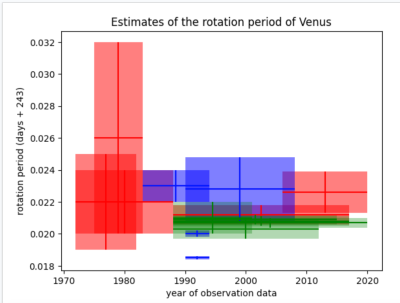[Nathaniel Fairfield] aka [thandal] was curious about the actual rotation and axis tilt of Venus. He decided to spin up at GitHub Python repository to study the issue further, as one does. The scientific literature shows a wide range of estimates and variations for the planet’s rotation and axis tilt. He wondered if the real answer might be found in a publicly available set of uncalibrated delay-doppler images of Venus. These data were collected by the former Arecibo Observatory in Puerto Rico from 1988 through 2020. [Thanda] observed that the planet’s rotation appears to be speeding up slightly, and furthermore, his estimates of the orbital axis were within 0.01 degrees of the International Astronomical Union’s (IAU) values. [Note: Venus is a bit confusing — one planetary rotation, 243 Earth days, is longer than its year, 225 Earth days].

There’s a lot of interesting signal processing going on here. The Doppler-delay data consists of images that are 8091×8092 array of complex values, has to be mapped onto the Venus geoid. Then by using various surface features, one can compare their positions vs time and obtain an estimate of rotational speed and tilt. If these kinds of calculations interest you, be sure to check out [Thandal]’s summary report, and also take note of the poliastro Python astrodynamics library. Why is this important? One reason to better plan future missions.
















Something you’ll never hear on Venus, “Hey boss, can I have tomorrow off?”
*These* data. PuhLease
I think I’m gonna just use ublock origin to kill the comment section on my local side again
Is it possible that in the first paragraph, every time the word “revolution” is used, it should be “rotation”? Also, it might help avoid confusion if you designate the time period as “Earth days”.
Good idea. Done. I had it crossed up when I first read the project’s summary. My understanding flip flopped twice until I finally realized what was going on.
Very impressive work Nathaniel !
Thanks!